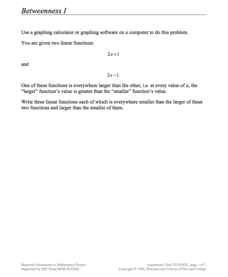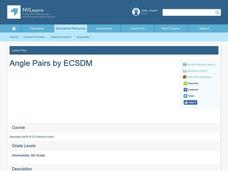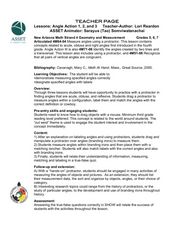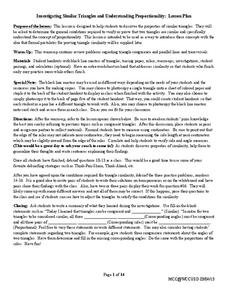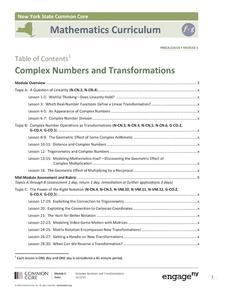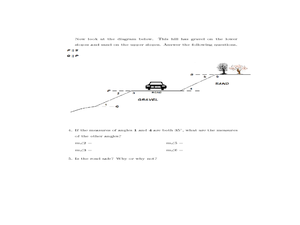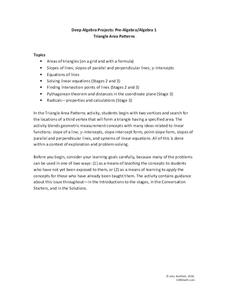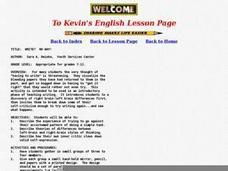Curated OER
Parallel and Perpendicular Lines
Tenth graders explore parallel and perpendicular lines. In this geometry lesson, 10th graders investigate the relationships associated with parallel lines and transversals, perpendicular lines, and the angles formed by these...
Alabama Learning Exchange
Mirror, Mirror on the Wall: Reflections of Light
Why can we see our reflection in a window but not a brick wall? Young physicists learn the Law of Reflection and various light properties that help them answer this and other questions about reflection. Use the PowerPoint to introduce...
Concord Consortium
Betweenness I
Just between us, this is a pretty cool lesson! Given two functions with the same slope, learners write three new functions whose outputs are all between the given functions. The question is open-ended, allowing pupils to explore the...
Curated OER
Angle Pairs
Students identify different angle pairs. In this geometry lesson, students identify the different angles of two parallel lines cut by a transversal. They identify the interior and exterior angles.
Curated OER
Angle Action 1,2 and 3
Students investigate angles through construction. In this geometry instructional activity, students use a protractor to identify the measurement of an angle. They identify angles cut by a transversal and two parallel lines.
West Contra Costa Unified School District
Investigating Similar Triangles
Let your use of the resource be in proportion to its usefulness. Pupils investigate similar triangles by measuring side lengths and considering given angle measures. The results of the investigation help develop generalizations about...
Curated OER
Introduction to Locus
Young scholars define the five rules of loci. In this geometry lesson, students identify the locus of points that creates a circle. They calculate the distance from a fixed line and point.
EngageNY
Complex Numbers and Transformations
Your learners combine their knowledge of real and imaginary numbers and matrices in an activity containing thirty lessons, two assessments (mid-module and end module), and their corresponding rubrics. Centered on complex numbers and...
Curated OER
New Angle on Forest Ecology
Students measure and calculate the angle of the sun. They compare the leaf types on the north and south to compare the effects of the sun on the type of vegetation. They complete the activities inside the classroom or on a trip to a...
Curated OER
The Tipping Point
Young scholars rewrite word problems and solve using math. In this word problem lesson, students gather data and observe the data. They relate this process to the scientific method and math. They review their data to be able to answer...
5280 Math
Triangle Area Patterns
Combine algebraic and geometric strategies to find solutions. The task asks learners to find the coordinates of a third vertex of a triangle to create a triangle with a specific area. The project is a set of seven problems that...
Mathematics Vision Project
Module 5: Modeling with Geometry
Solids come in many shapes and sizes. Using geometry, scholars create two-dimensional cross-sections of various three-dimensional objects. They develop the lesson further by finding the volume of solids. The module then shifts...
Curated OER
An Introduction to Quadrilaterals
Students explore different types of quadrilaterals. Students define the terminology used with quadrilaterals. They create particular quadrilaterals based on specific characteristics of the quadrilaterals using an online tool.
Curated OER
Naming Shapes
Students study geometric shapes and practice naming them properly. In this geometry lesson, students work in groups to give definitions of the vocabulary to each other in their own words. Students also visit a lower grade and teach...
Curated OER
WRITE? NO WAY!
Young scholars discover the right brain-left brain differences and then think about how to break down some of their self-criticism to try writing.
Curated OER
Acceleration
Students develop an understanding of velocity and to distinguish it from speed. To determine the difference between a scalar and a vector quantity. To explore how acceleration is derived from velocity and time.


